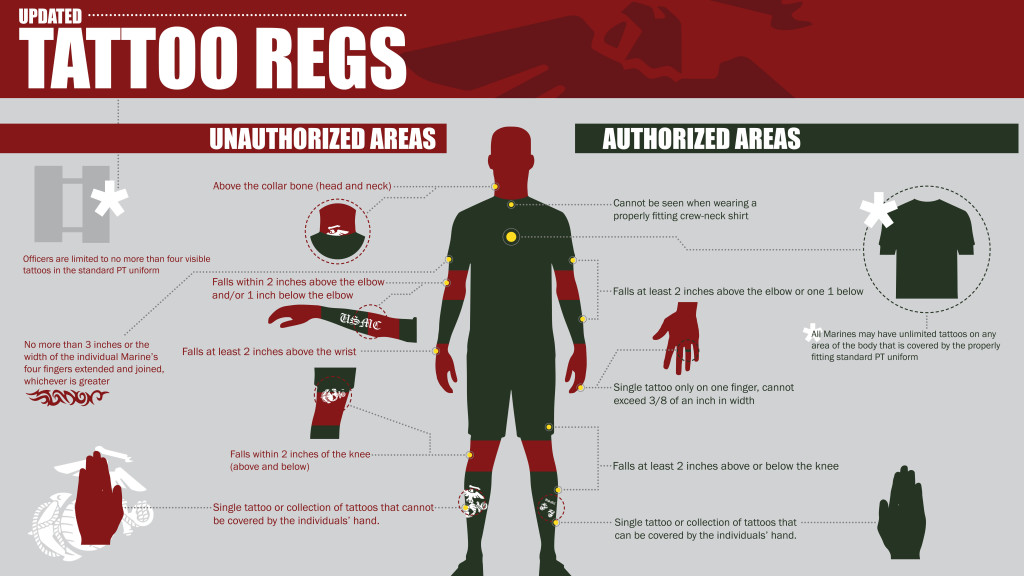
The few, the proud, the inked
Joining the military means you're prepared to put skin in the game, as the saying goes. More and more, that skin is adorned with ink.
Joining the military means you’re prepared to put skin in the game, as the saying goes. More and more, that skin is adorned with ink.
You’ve probably noticed, tattoos have gone mainstream. Big and highly graphic tattoos that used to look menacing, you now see on 104-pound young mothers driving their Infiniti SUV’s to the gym. In the workplace, though, most policies frown on visible ink that could appear off-putting or unprofessional to visitors.
The armed services have been constantly reviewing and rewriting their tat policies, trying to balance a professional appearance with what has become a cultural norm. I mean, if you’re going to try and attract red-blooded young men and women to a difficult and dangerous career, a tattoo ban would reduce recruiting levels to something approximating zero. The “norm” used to mean a skull-and-dagger on the shoulder, ordinarily unseen while in uniform. Now it’s crept steadily across the body to where it often sprouts above the neckline of a T-shirt and all the way to the wrists and ankles. That’s on normal people.

Hand it to the Marine Corps for diving deep into this challenge with its new, 32-page policy manual on tattoos. It doesn’t quite reach the level of, say, Gen. Joseph Joffre’s Plan 17, but Marine Corps Commandant Bob Neller’s new policy is pretty detailed.
I mean detailed. To wit: Lower arm tattoos “may extend down no further than a line around the circumference of the wrist measured at two inches above the wrist bone and may extend up no further than a line around the circumference of the lower arm measured at one inch below the elbow.” Or this: Lower arm tattoos are restricted to single images or groups ” which can be covered by the individual Marine’s hand with their fingers extended and joined with the thumb flush against the side of the hand. The measurement will be from the base of the palm to the tip of the fingers and from the outside of the thumb to the outside of the palm.”
Got that?
More commentary
Helpful photographs and diagrams with the forbidden areas highlighted in magenta help make all of this verbiage clear. The manual includes a cut-out shape approximating the outline of a hand a Marine can use to delineate the allowable tattoo area.
By comparison, the Army’s tattoo policy takes up a page and a half, with no pictures, of its larger, 66-page uniform-wearing and grooming manual. The Air Force devotes three paragraphs of its “Excellence In All We Do” recruitment guide. All of the military branches forbid any tattoo, visible or not, that depicts something racist, hateful or just plain bizarre.
At one time, the military didn’t allow visible tattoos, period. Now the armed services are tying to balance the tattoo rage with good order and discipline and a professional appearance. The brass don’t want soldiers, sailors, airmen or marines looking to the public like gang members. But they recognize the need to accommodate a 21st century reality.
Copyright © 2025 Federal News Network. All rights reserved. This website is not intended for users located within the European Economic Area.
Tom Temin is host of the Federal Drive and has been providing insight on federal technology and management issues for more than 30 years.
Follow @tteminWFED





